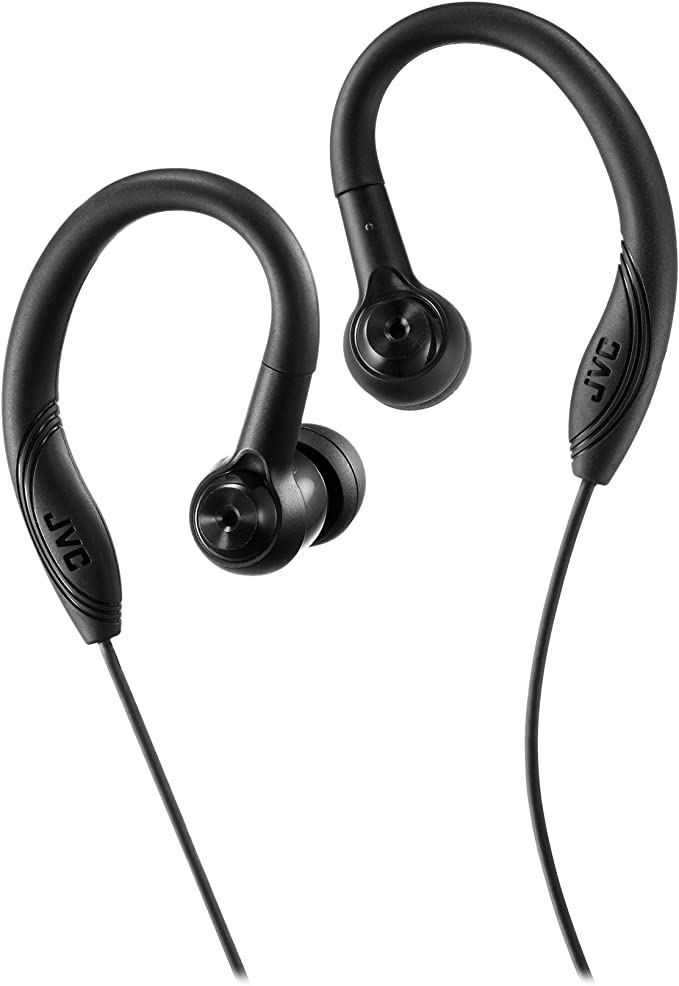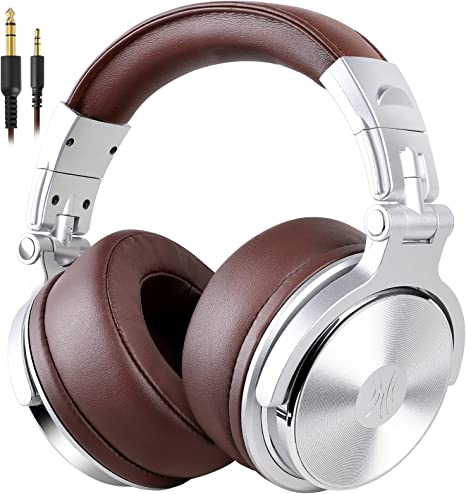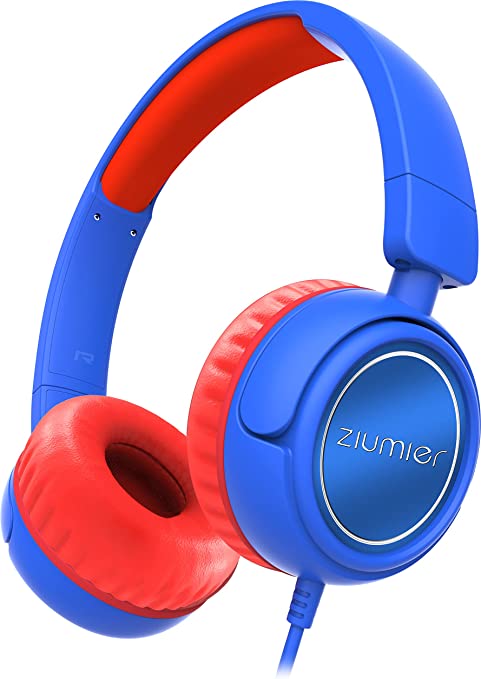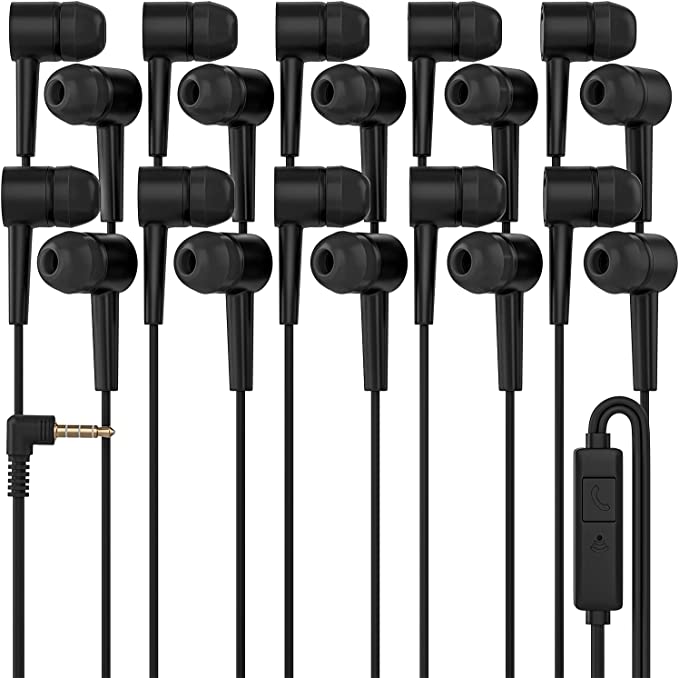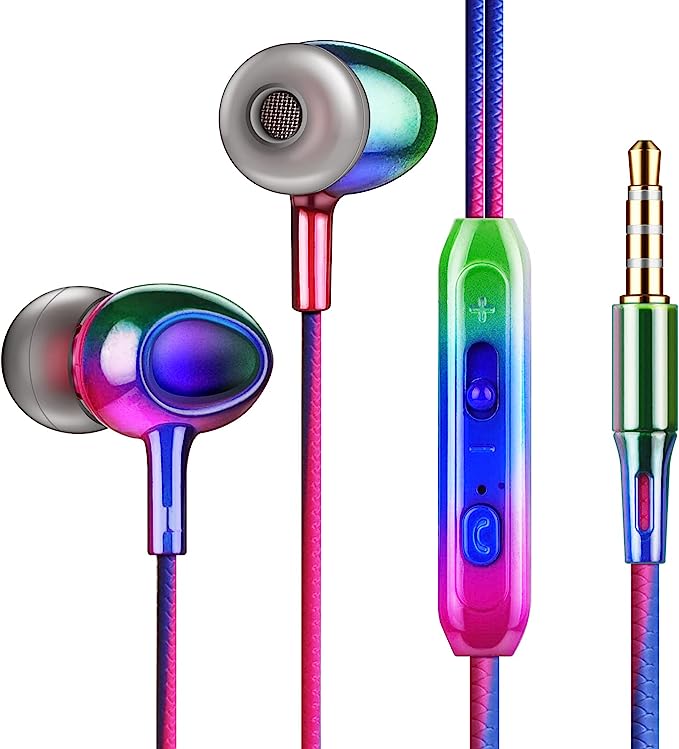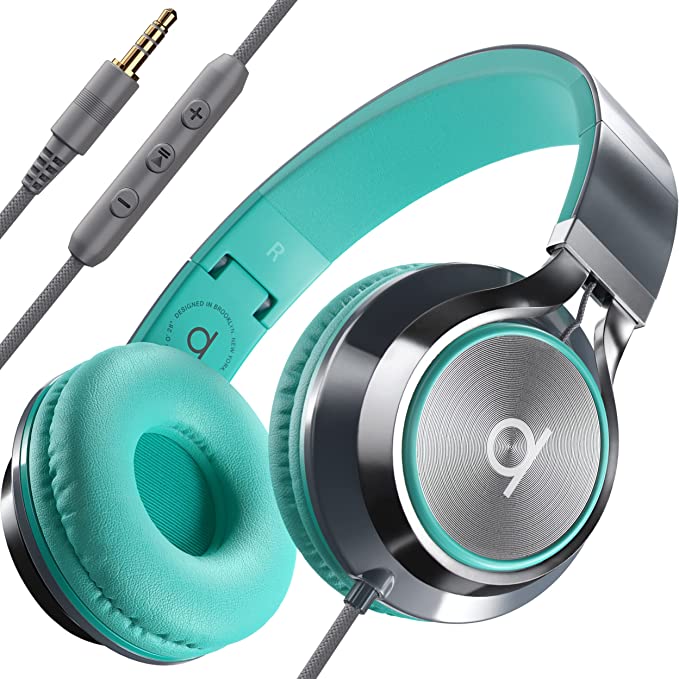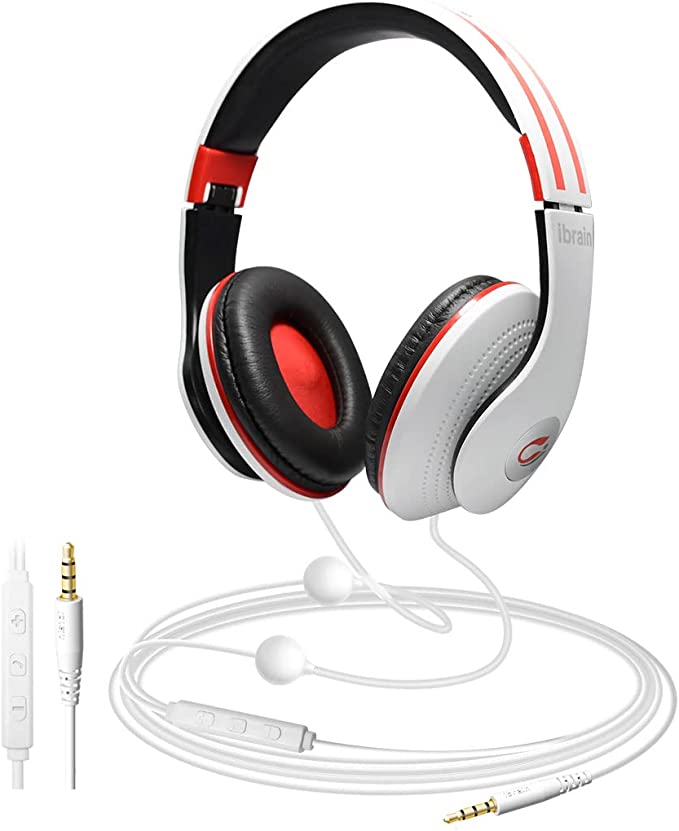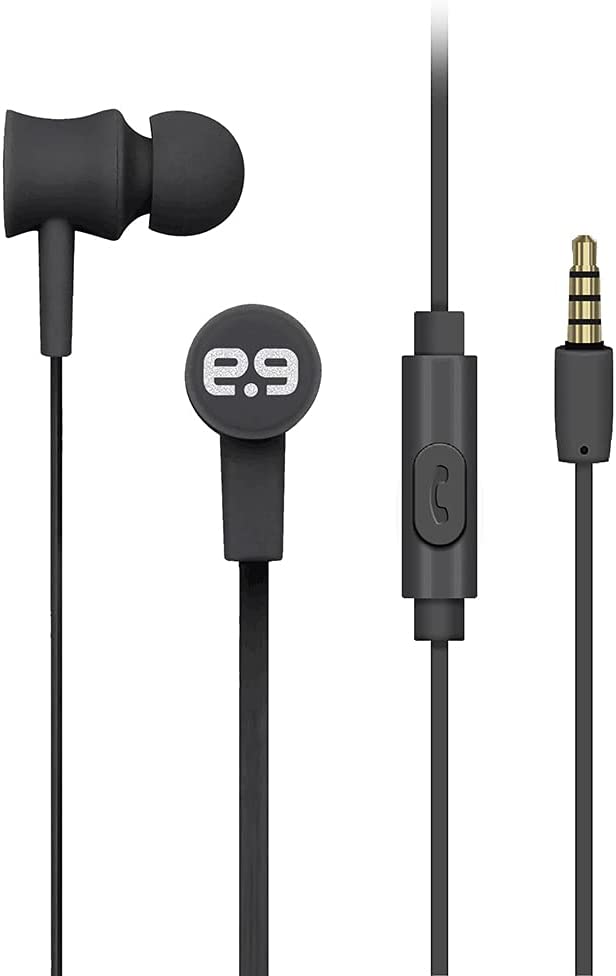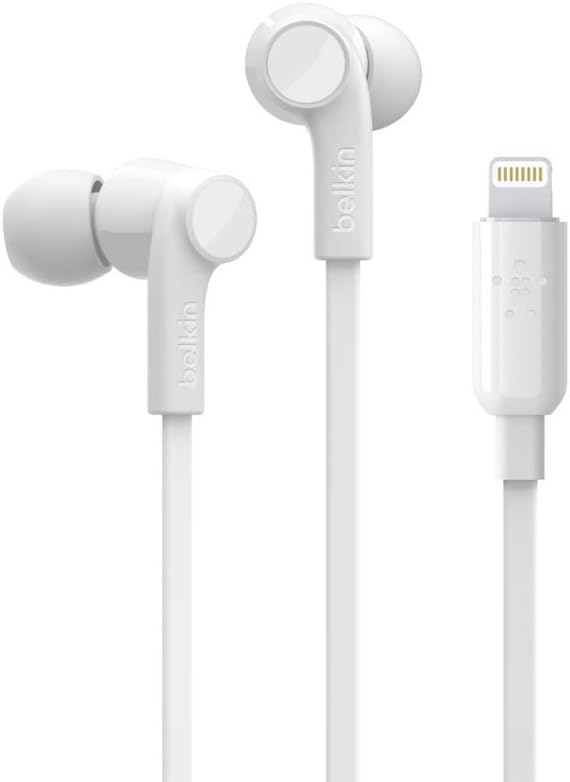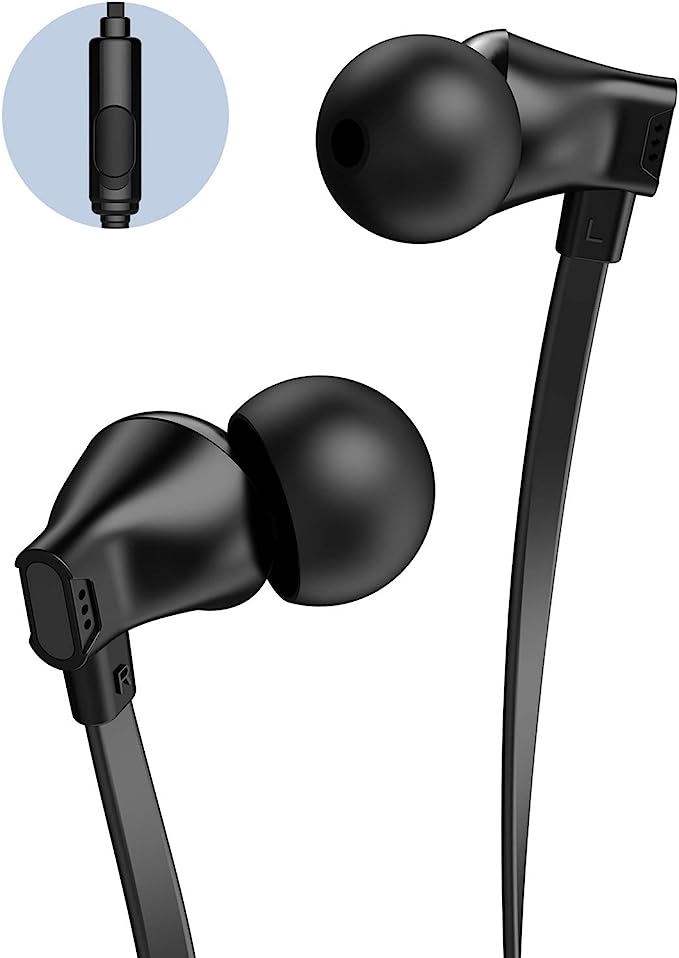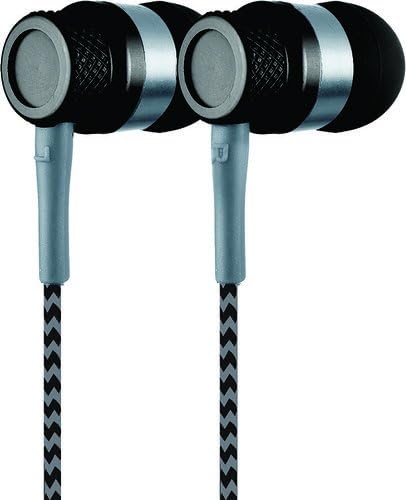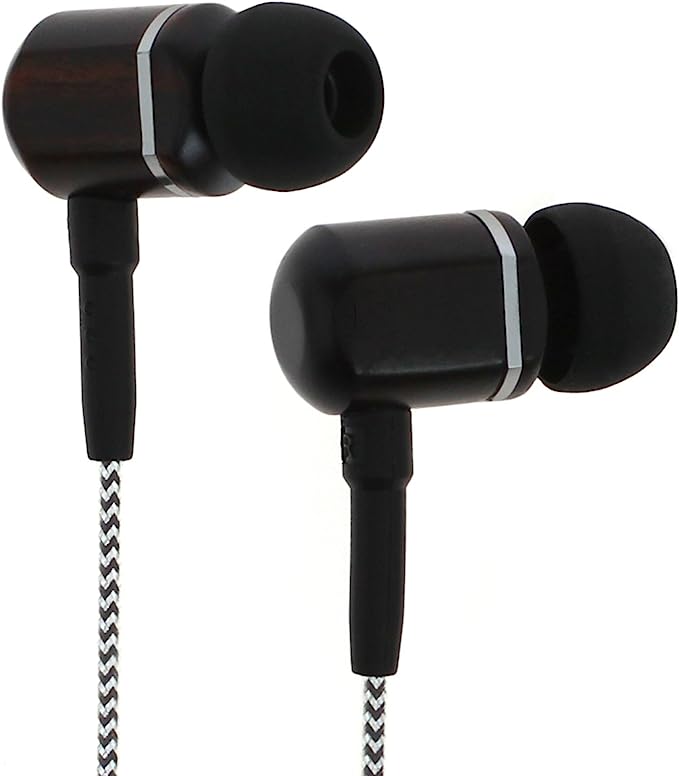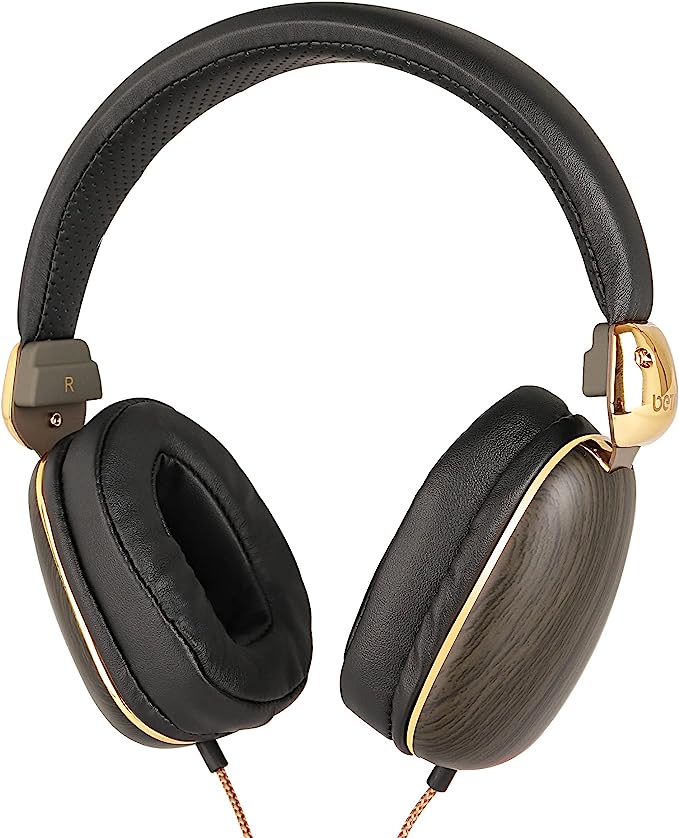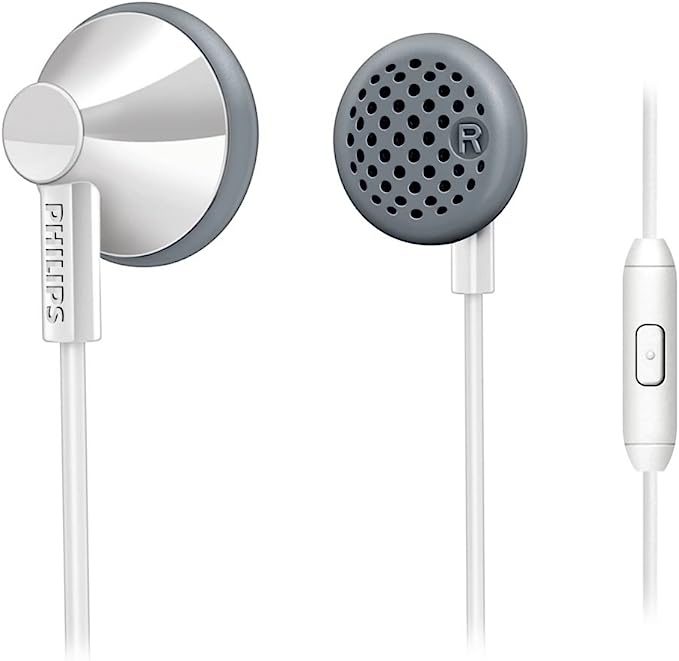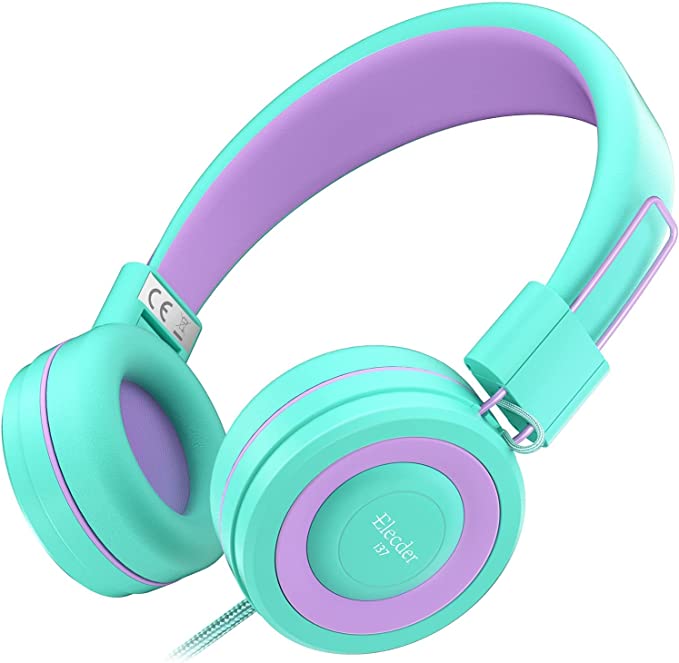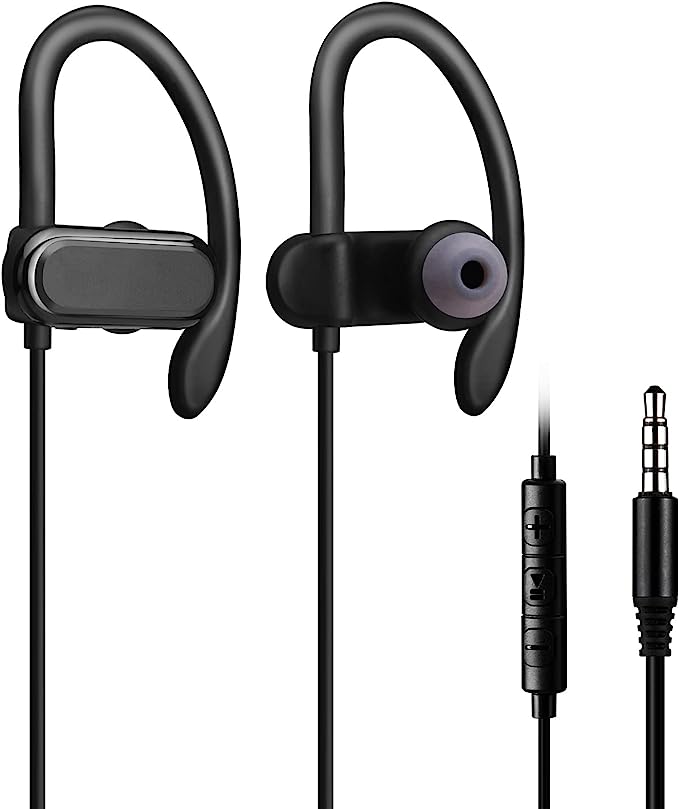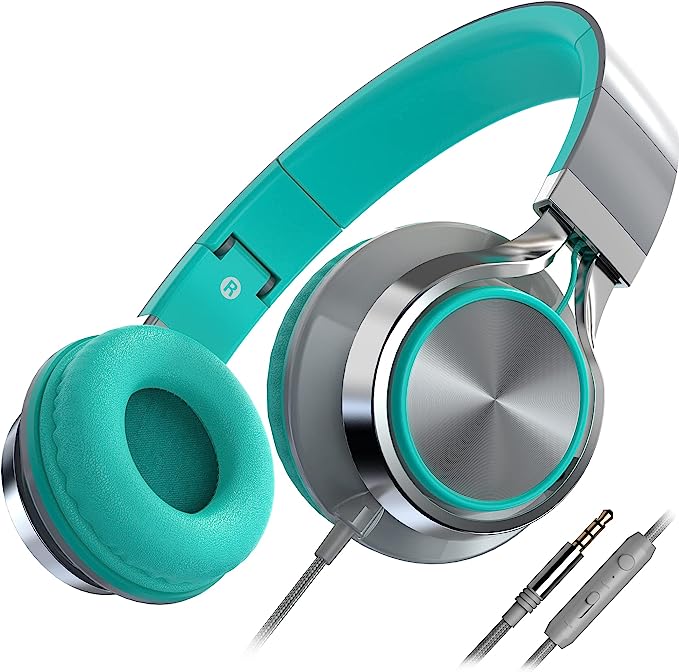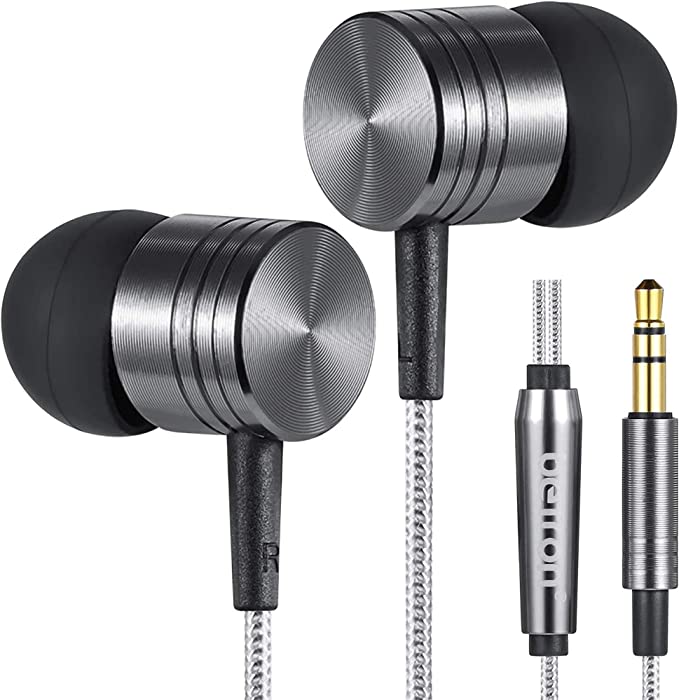MOXKING YI1 Earbuds: The Science of a Snug, Tangle-Free Audio Experience for All Ears
Update on May 15, 2025, 3:50 p.m.
We’ve all been there. The hurried rummage in a bag or pocket, only to pull out a frustratingly tangled Medusa’s head of earbud wires. Or perhaps it’s the persistent ache from an earbud that just won’t sit right, constantly dislodging or pressing uncomfortably, especially if your ears lean towards the smaller side of the spectrum. In our quest for that perfect personal sound bubble, these small irritations can loom large. Today, we’re not looking at a flagship marvel of audio engineering, but something far more common: a pair of budget-friendly wired earbuds, the MOXKING YI1 Tangle Free Earbuds. Why these? Because even in the simplest of our everyday technologies, there’s a fascinating interplay of science, design, and human experience waiting to be explored. So, grab a metaphorical cup of tea, and let’s delve into the unseen principles that attempt to make our listening lives a little smoother, one earbud at a time.

Act I: The Ergonomic Enigma – In Search of the “Ahhh, Perfect Fit!“
The human ear is a marvel of biological engineering, and like fingerprints, remarkably unique. Walk down any street, and you’ll see a beautiful diversity in ear shapes and sizes. This is where the world of “one-size-fits-all” personal audio often stumbles. For many, particularly children (the YI1 is recommended for ages 8 and up) and a significant number of adults, especially women, standard-issue earbuds can feel like trying to fit a square peg into a round—or rather, a uniquely curved—hole. This isn’t just about a fleeting discomfort; a poor fit can lead to actual pain, quick fatigue, and the buds constantly threatening to escape.
Enter the concept of ergonomic design. The MOXKING YI1, for instance, features an ergonomic angled in-ear design. Now, this isn’t just an arbitrary stylistic choice. If you were to peek (metaphorically, of course!) inside the average ear canal, you’d notice it isn’t a straight shot. It has a gentle, natural curve. An angled nozzle on an earbud attempts to align with this anatomical pathway. Think of it like a key designed to slide smoothly into a specific lock. This alignment can contribute significantly to a more stable fit – less wobbling, less falling out – and can distribute the contact pressure more evenly, which is crucial for long-term comfort. Many users of the YI1, particularly those with smaller ears, have reported a surprisingly comfortable and secure experience, a testament to even small ergonomic considerations making a big difference.
Further enhancing this tailored approach is the YI1’s provision of six different sizes of eartips: three “standard” adult sizes and, notably, three “extra tiny” options. This might seem like a minor detail, but from an acoustic and comfort standpoint, it’s paramount. These little silicone domes are the unsung heroes of your listening experience. Imagine trying to seal a bottle with a cork that’s too big or too small; neither works effectively. Similarly, the eartip needs to create an optimal acoustic seal within your ear canal.
Why is this seal so critical? Firstly, it’s the gateway to passive noise isolation. The silicone eartip acts as a physical barrier, dampening the intrusion of ambient sounds from the outside world – the office chatter, the rumble of the bus. This isn’t the sophisticated electronic noise cancellation you find in high-end headphones, but rather a mechanical muffling, like closing a window on a noisy street. It allows you to enjoy your audio at lower, safer volumes because you’re not constantly battling external noise. Secondly, a good seal is vital for bass reproduction. Low-frequency sound waves need that enclosed space to resonate properly and be perceived with richness. If the seal is poor, bass frequencies “leak” out, leaving the sound thin and tinny. Finally, the right eartip size is the foundation of a secure fit. It’s the “Cinderella slipper” principle – when it’s just right, it stays put, comfortably. The YI1, by offering a broader range, significantly increases the chances of more users finding that “just right” sensation. Add to this the lightweight nature of the YI1 earbuds – a mere 15 grams (or about 0.529 ounces) – and the design intent becomes clear: to minimize physical strain and allow for hours of listening without your ears constantly reminding you they’re there. Less mass means less inertia and less downward pull, simple physics contributing directly to user comfort.

Act II: The Gordian Knot Untied – The Quiet Physics of a Tangle-Free Life
Ah, the perennial plight of the wired earbud user: the Pocket Spaghetti Monster. You carefully coil your cables, place them gently in your pocket or bag, and minutes later, they emerge as if a mischievous gremlin has been practicing macramé. Why this relentless urge to knot? Traditional round cables, with their circular cross-section, are highly flexible in all directions. They can bend, twist, and loop with equal ease. When multiple segments of such a cable come into contact, friction and their inherent tendency to coil (a bit like a relaxed spring wanting to find a comfortable, often convoluted, position) conspire to create those frustrating tangles.
The MOXKING YI1, however, employs a flat cable design, a simple yet surprisingly effective countermeasure rooted in basic mechanics. Think of a flat ribbon versus a piece of string. The string can easily tie itself into knots. The ribbon, due to its geometry, is far more resistant. A flat cable has a distinct rectangular cross-section. This means it has a preferential bending axis – it’s much easier to bend it along its wider, flat surface than it is to bend or twist it along its thinner edge. This increased stiffness against twisting (torsional stress) and the reduced likelihood of it forming tight, complex loops are key to its tangle-free (or, more accurately, tangle-resistant) nature. The wider surfaces also have less tendency to interlock in the intricate ways that round cables do. While no flexible cable can be entirely immune to an occasional snag, users generally find flat cables, like the 130cm (51-inch) one on the YI1, significantly less prone to severe knotting.
This isn’t just about convenience; it’s also about longevity. Constant tangling and untangling puts stress on the delicate copper wires within the cable, especially at the connection points. The product description for the YI1 mentions a “sturdy cable” and “reinforced jack”. These are crucial design considerations. The jack (the part that plugs into your device) and the points where the cable enters the earpieces are notorious weak spots. Reinforcing these areas, often with slightly thicker or more flexible material, helps to distribute stress and prevent premature breakage from the repeated bending and pulling of daily use. It’s a small detail, but it speaks to an understanding of how materials fatigue and fail under common stresses – a little bit of applied material science aimed at extending the product’s lifespan. It’s a quiet acknowledgment that our battle with tangled wires has been a long one, dating back to the earliest days of telephone switchboards and telegraph lines, a simple problem that continues to inspire simple, yet clever, engineering solutions.

Act III: The Sonic Signature – Balancing Clarity, Cost, and User Ears
Ultimately, we wear earbuds to listen. The MOXKING YI1 claims to deliver “balanced and crystal clear sound” with “decent bass, clear vocals, and crisp treble.” In the world of audio, “balanced” generally refers to a sound signature where no single part of the frequency spectrum (lows, mids, highs) overly dominates the others. It aims for a faithful, natural reproduction of the source audio. Most earbuds in this category, including likely the YI1, use dynamic drivers. In very simple terms, these work a bit like miniature loudspeakers. An electrical audio signal energizes a coil of wire, creating a magnetic field that causes a small diaphragm (a thin membrane) to vibrate rapidly. These vibrations create sound waves, which then travel into your ear.
Achieving a truly balanced and crystal-clear sound, especially in budget-friendly earbuds, is a significant engineering challenge. The quality of the driver components, the acoustic design of the earpiece housing, and, as we’ve repeatedly emphasized, the acoustic seal provided by the eartip, all play crucial roles. That seal ensures that the sound waves generated by the driver are efficiently channeled into your ear canal and that bass frequencies, in particular, don’t dissipate before they can be properly perceived.
The YI1 also features an in-line microphone, with the product page claiming it’s a “noise cancelling mic.” For earbuds in this price bracket, it’s important to set realistic expectations. This is unlikely to be the active noise cancellation (ANC) found in premium headphones, which uses sophisticated electronics to identify and neutralize external sounds. More probably, it refers to a microphone element or acoustic design that inherently offers some degree of passive directivity – meaning it’s better at picking up sound from directly in front of it (your mouth) than from the sides or rear – or perhaps some very basic electronic filtering to reduce a narrow band of consistent noise. The goal is to improve voice clarity for the person on the other end of your call or a gaming session, making your voice more intelligible against background hubbub. For everyday calls, this can be a perfectly adequate solution. The 3-button in-line remote further adds to the convenience, allowing for control over music playback, calls, and volume (though with a noted incompatibility for volume control on some devices like iPods, PCs, and Kindles, which is a fairly common quirk related to differing control signal standards).
Now, when it comes to the subjective experience of sound quality for the YI1, user feedback from the provided Amazon source is somewhat mixed. Some users find the sound perfectly adequate or even good for the price, aligning with the product’s claims. Others, however, report a less impressive experience, with terms like “muddled” or an imbalance where treble might overshadow bass. This highlights a crucial aspect of audio: perception is personal. What sounds “balanced” to one person might sound “tinny” or “boomy” to another, due to individual hearing acuity, the type of music listened to, the quality of the audio source itself, and even the effectiveness of the eartip seal they’ve achieved. For budget audio products, engineers walk a tightrope, trying to maximize performance within strict cost constraints. The YI1 aims for a generally pleasing sound, but variations in user experience are almost inevitable in this segment.

Act IV: The Enduring Connection – The Humble 3.5mm Jack and Practical Perks
In an era increasingly dominated by wireless Bluetooth technology, the MOXKING YI1 proudly sports a standard gold-plated 3.5mm audio jack. This humble connector, sometimes called a headphone jack or an audio plug, has a surprisingly storied history, dating back to telephone switchboards in the late 19th century! Its longevity is a testament to its simplicity, robustness, and effectiveness. The “gold-plated” aspect isn’t just for show; gold is an excellent conductor and is highly resistant to corrosion, which helps maintain a clean and reliable electrical connection over time, minimizing crackles or signal degradation.
Why stick with a wire in a wireless world? For many, wired connections still offer distinct advantages. There’s generally zero perceptible latency (delay), which is crucial for gaming or watching videos where audio-visual sync is important. You never have to worry about charging your earbuds. And, for some audiophiles, a direct wired connection is still seen as offering the purest, most uncompressed signal path, though for everyday listening with earbuds like the YI1, this is less of a practical concern than convenience and reliability. The wide compatibility of the 3.5mm jack means the YI1 can plug into a vast ecosystem of devices – from smartphones (some newer ones requiring an adapter, a modern wrinkle in the jack’s tale) and laptops to MP3 players, tablets, and gaming systems like the PS4 or Nintendo Switch.
Finally, a small but thoughtful inclusion with the YI1 is the handy carrying case. This addresses another common pain point: how to store and protect these small, somewhat delicate devices when not in use. A case prevents the earbuds from being crushed in a bag, keeps the cable (even a tangle-free one) neatly contained, and stops the eartips from collecting pocket lint or detaching and getting lost. It’s a simple acknowledgment that the life of an earbud extends beyond just being in your ears.

Closing: Listening Deeper to the World Around Us
The MOXKING YI1 Tangle Free Earbuds, like so many of the unassuming technological objects that populate our daily lives, are more than just the sum of their parts. They represent a series of deliberate design choices and engineering compromises, all aimed at solving specific user problems – the need for a comfortable fit in smaller ears, the desire for a frustration-free cable, the expectation of clear audio, and the demand for everyday durability, all within an accessible price point.

By peeling back the layers, we see principles of ergonomics guiding the shape, physics dictating the behavior of a flat cable, and acoustics influencing the all-important seal of an eartip. It’s a reminder that even the most commonplace items can be a gateway to understanding a much larger world of science and ingenuity. Perhaps the next time you pop in your favorite pair of earbuds, whatever they may be, you’ll listen not just to the music, but also, just for a moment, to the unheard symphony of thought and science that brought them into being. The world is full of such quiet marvels, if only we attune our senses to them.
